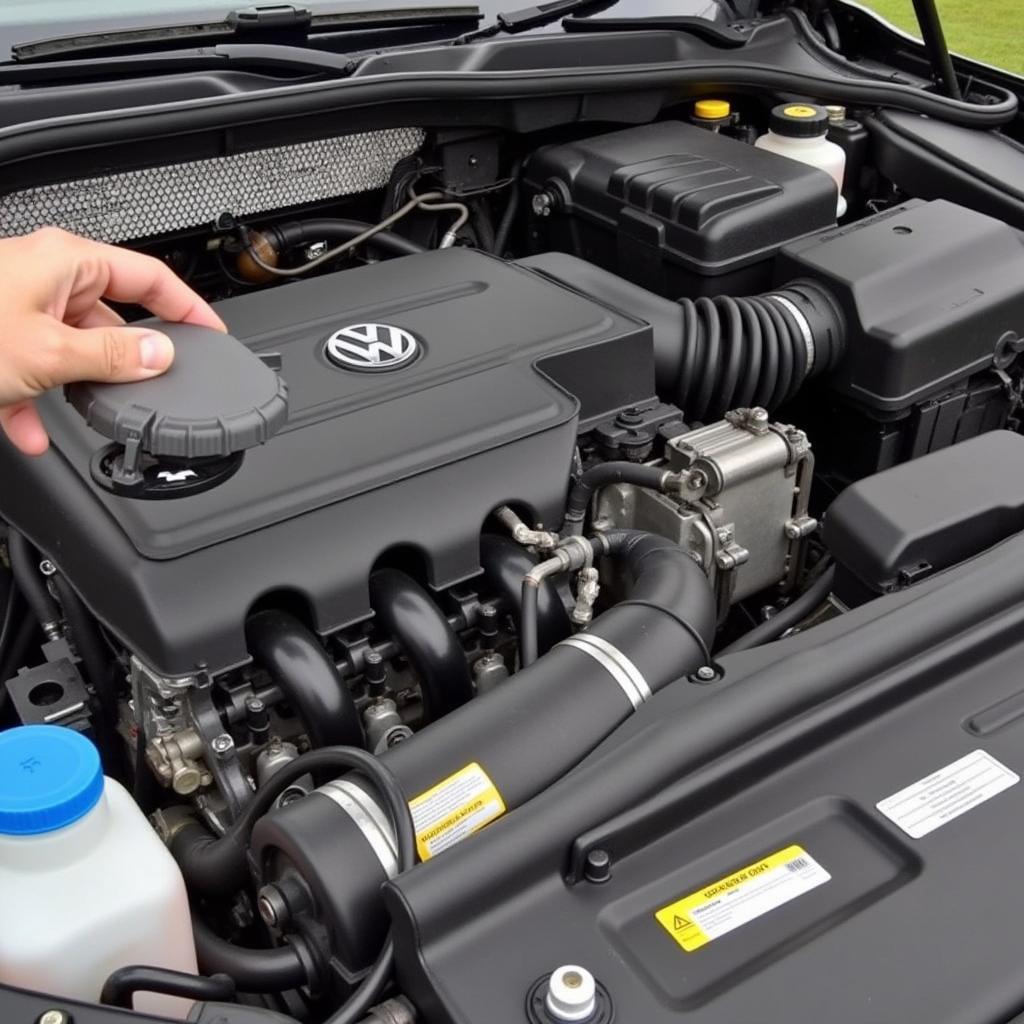Your cart is currently empty!

VW Golf P2015 Fault Code: A Comprehensive Guide
The dreaded VW Golf P2015 fault code. It’s a common issue, but what does it mean, and more importantly, how do you fix it? This guide will delve into the P2015 fault code, providing comprehensive information for VW Golf owners, mechanics, and technicians alike. We’ll cover everything from diagnosing the problem to effective repair strategies.
The P2015 fault code specifically refers to the intake manifold runner position sensor/switch circuit range/performance bank 1. This means there’s an issue with the system that controls the airflow into your engine. Ignoring this can lead to decreased performance, reduced fuel efficiency, and potentially more serious engine problems down the road.
See more information about your VW fault codes here: vcds codes vw mk7
What Causes the VW Golf P2015 Fault Code?
Several culprits can trigger the P2015 fault code in your VW Golf. Understanding these potential causes can help you pinpoint the problem quickly and effectively.
- Faulty Intake Manifold Runner Position Sensor: The most common cause is a malfunctioning sensor itself. This sensor tells the engine control unit (ECU) the position of the intake manifold runner flaps, which regulate airflow.
- Wiring Issues: Damaged or corroded wiring in the sensor circuit can disrupt the signal and cause the P2015 code.
- Carbon Buildup: Excessive carbon buildup on the intake manifold runner flaps can restrict their movement and trigger the code.
- Vacuum Leaks: Leaks in the intake system can disrupt airflow and cause the sensor to report incorrect readings.
- Stuck or Broken Intake Manifold Runner Flaps: Sometimes, the flaps themselves can become stuck or break, leading to the P2015 code.
Diagnosing the P2015 Fault Code
Proper diagnosis is crucial for fixing the P2015 code correctly. Here’s a step-by-step guide:
- Use a Diagnostic Scanner: Connect a compatible OBD-II scanner to your VW Golf’s diagnostic port. Retrieve the stored trouble codes.
- Inspect the Wiring: Visually examine the wiring and connector for the intake manifold runner position sensor. Look for any signs of damage, corrosion, or loose connections.
- Check for Vacuum Leaks: Inspect the intake system for any leaks using a smoke test or by listening for hissing sounds.
- Test the Intake Manifold Runner Position Sensor: Use a multimeter to test the sensor’s resistance and voltage according to the manufacturer’s specifications.
 VW Golf P2015 Diagnostic Scanner
VW Golf P2015 Diagnostic Scanner
How to Fix the VW Golf P2015 Fault Code
Once you’ve diagnosed the problem, you can move on to the repair process. Depending on the cause, the fix could range from a simple cleaning to replacing components.
- Replace the Intake Manifold Runner Position Sensor: If the sensor is faulty, replacement is the most straightforward solution.
- Repair Wiring Issues: Repair or replace any damaged or corroded wiring in the sensor circuit.
- Clean the Intake Manifold: Remove carbon buildup from the intake manifold and runner flaps using a specialized cleaner.
- Repair Vacuum Leaks: Identify and fix any vacuum leaks in the intake system.
- Replace the Intake Manifold Runner: In cases where the flaps are stuck or broken, the entire intake manifold runner may need to be replaced.
 VW Golf P2015 Intake Manifold Cleaning
VW Golf P2015 Intake Manifold Cleaning
What Does the Intake Manifold Runner Do?
The intake manifold runner is a crucial part of your engine’s air intake system. It controls the amount of air entering the cylinders, optimizing performance and fuel efficiency at different engine speeds.
Can I Drive with the P2015 Code?
While you might be able to drive with the P2015 code, it’s not recommended. Continuing to drive could worsen the issue and potentially damage other engine components.
How Much Does it Cost to Fix the P2015 Code?
The cost to fix the P2015 code can vary depending on the specific cause and the labor rates in your area. It could range from a few hundred dollars for a sensor replacement to over a thousand dollars for more extensive repairs.
 VW Golf P2015 Intake Manifold Runner Replacement
VW Golf P2015 Intake Manifold Runner Replacement
“Regular maintenance and prompt attention to fault codes like the P2015 can save you time, money, and headaches down the line,” says John Smith, a seasoned automotive engineer with over 20 years of experience.
Conclusion
The VW Golf P2015 fault code, while common, shouldn’t be ignored. By understanding its causes and following the diagnostic and repair steps outlined in this guide, you can effectively address the issue and keep your VW Golf running smoothly. For more detailed information on VW fault codes, check out this resource: vcds codes vw mk7. Don’t hesitate to connect with us at +1 (641) 206-8880 and our email address: vcdstool@gmail.com or visit our office at 6719 W 70th Ave, Arvada, CO 80003, USA, for expert assistance.
 VW Golf P2015 Wiring Inspection
VW Golf P2015 Wiring Inspection
“Addressing the P2015 code promptly not only restores performance but also prevents further damage and costly repairs,” adds Jane Doe, a leading technician specializing in European vehicles.
by
Tags:
Leave a Reply